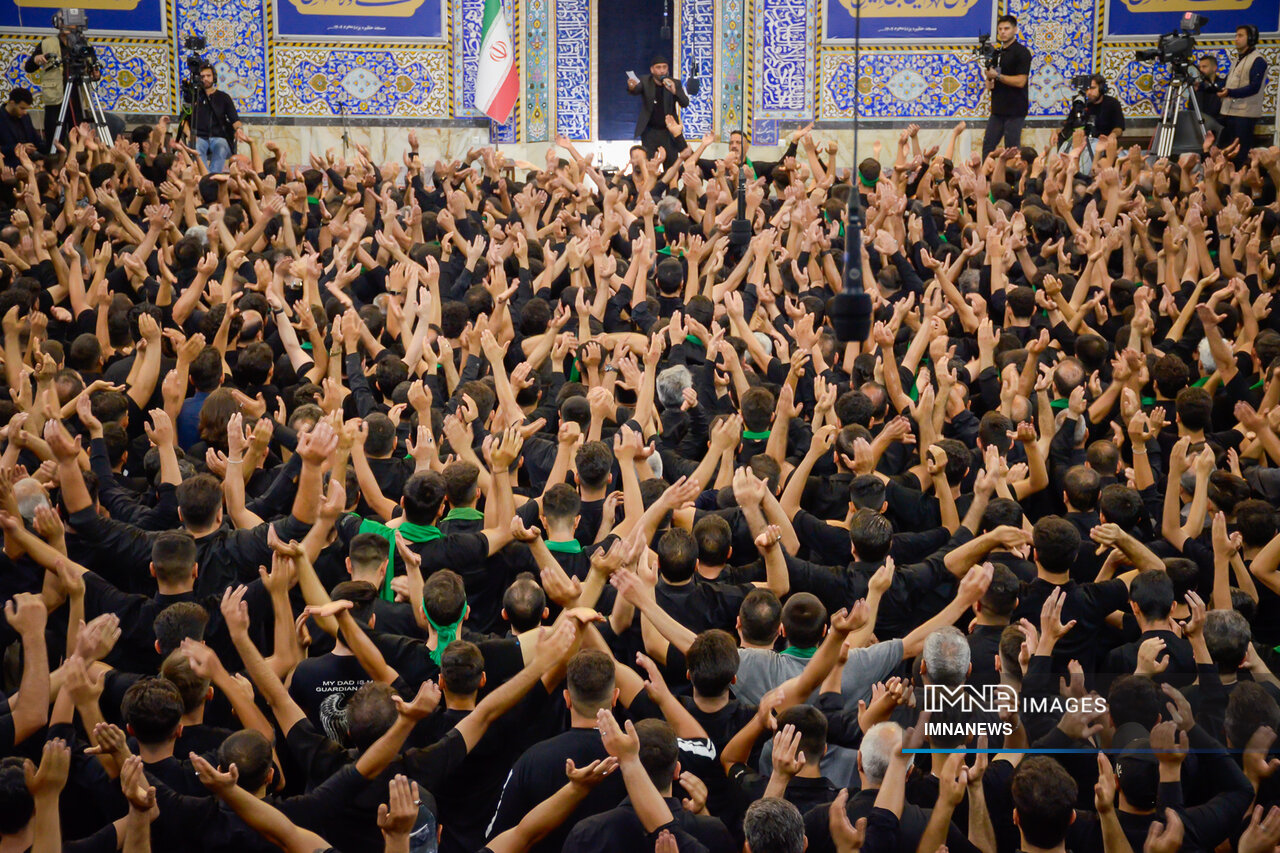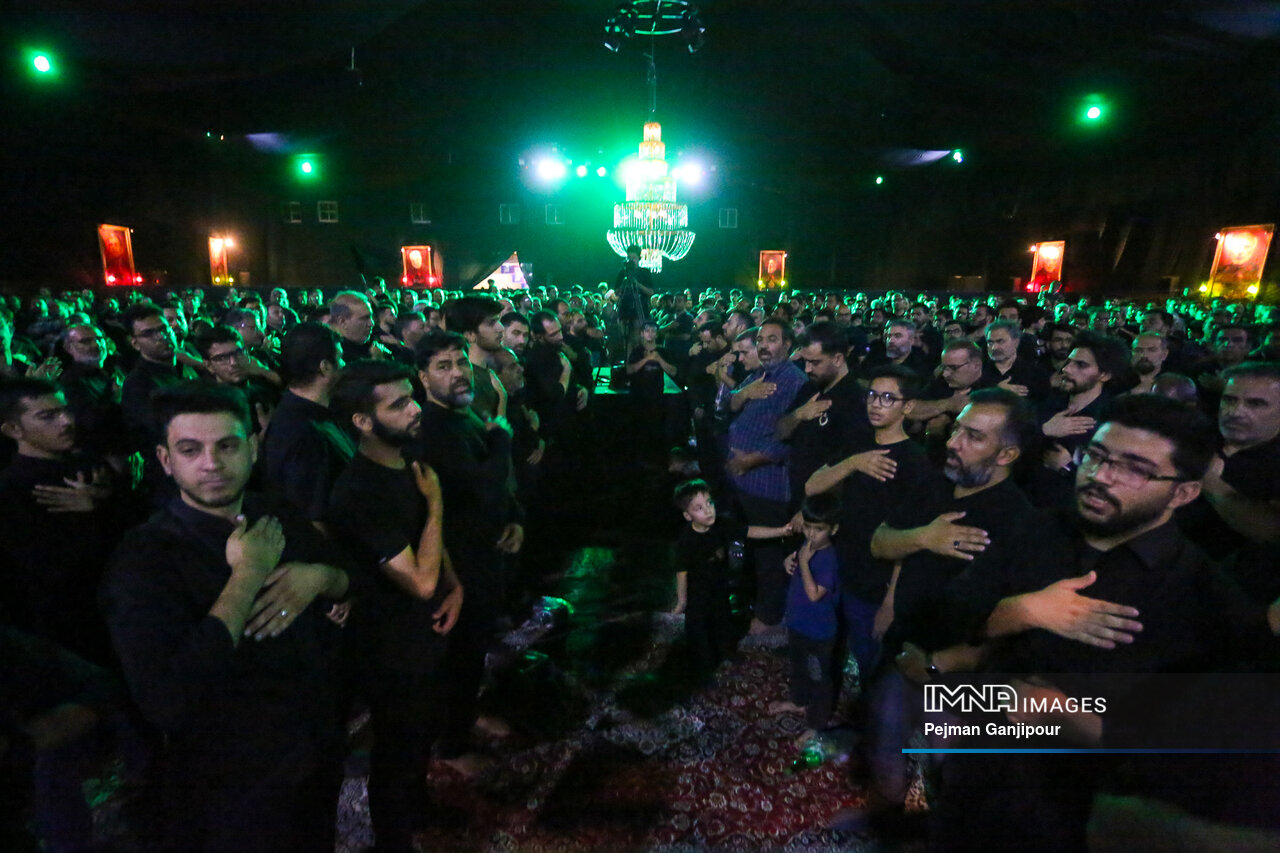Iran (IMNA) - Observed globally by Muslims, Ashura commemorates the martyrdom of Imam Hussein (AS) at the Battle of Karbala on the 10th of Muharram, 61 AH (October 10, 680). This pivotal event motivates Shia Muslims and others to follow Imam Hussein’s pursuit of independence and liberation.
Imam Hussein (AS), known for his piety, opposed Yazid’s caliphate succession in Damascus due to Yazid’s unworthiness. Although the battle of Ashura was brief, its impact was profound. Despite attempts to erase its memory, the lessons of Ashura endure, with millions mourning the injustice suffered by Imam Hussein (AS).
Shia Muslims engage in special rituals during the first ten days of Muharram—this year from July 19 to 28—including pilgrimages to Imam Hussein’s shrine in Karbala, Iraq. Hundreds of thousands of devotees visit the shrine to honor Imam Hussein (AS) and his seventy-two followers who died thirsty in battle against Yazid’s forces.

Mourning customs feature wearing black, decorating streets, mosques, and Husayniyahs with mourning flags, and performing passion plays that reenact the events of Ashura. These Muharram ceremonies are a vital part of Shia culture worldwide, with diverse local expressions and widespread pilgrimages to Karbala.
Ashura transcends Islamic history, symbolizing universal values such as humanity, courage, and honesty. Its commemoration extends beyond Muslims, with some communities preparing special foods distributed to the poor as acts of charity and remembrance. Blood donation drives are also organized, reflecting Imam Hussein’s ultimate sacrifice.
Mourning is viewed as a powerful devotion, connecting participants to Hussein’s suffering and reaffirming their commitment to justice. Ashura remains a potent emblem of resistance against oppression and a call for moral integrity, resonating deeply within Shia communities and inspiring reflection on universal ethics.
In Iran, the night of Ashura, known as Shaam-e Ghariban ("the night of strangers"), is marked by candlelight vigils in holy places. Mourning processions, elegies, and the distribution of “Nazri” (votive food) are central rituals. Food and drinks such as tea and fruit juices are offered from kiosks and stalls, with even non-Muslims participating by receiving food from neighbors. This tradition has become industrialized, with companies producing Nazri, while families in Tehran prepare dishes to share locally.
Ta'zieh performances, recognized by UNESCO as Intangible Cultural Heritage of Humanity, dramatize the Ashura story through poetry, music, song, and motion. These theatrical presentations, rooted in Iranian music traditions and dating back to the 9th century, flourished during the Safavid and Qajar periods.
Master miniaturist Mahmud Farshchian’s painting “The Evening of Ashura” captures the immense tragedy of Ashura and the power of art to express historical events. The artwork depicts Imam Hussein’s (AS) household mourning after his horse returns alone from battle, symbolizing their profound grief.
Karbala stands as the ultimate confrontation between truth and falsehood, justice and prejudice, courage and worldliness. Muharram ceremonies embody this eternal struggle against injustice, tyranny, and oppression. The Day of Ashura is a powerful reminder of sacrifices made for principles and the unwavering commitment to justice amid overwhelming odds.

The story of Imam Hussein (AS) is not confined to the past; it remains a living narrative that resonates with people of all backgrounds seeking a world free from oppression and filled with righteousness. Ashura’s rituals are more than mourning—they express solidarity with Imam Hussein (AS) and his followers and serve as a call to stand against injustice and promote equity and compassion.
Black attire, mourning flags, elegies, and Nazri foster collective grief and remembrance, strengthening community bonds and reinforcing empathy. The pilgrimage to Karbala is a spiritual journey for hundreds of thousands annually, connecting them to Imam Hussein’s spirit and inspiring faith.
The shrine of Imam Hussein (AS) symbolizes hope and resistance, attracting pilgrims worldwide. The atmosphere in Karbala during Muharram is charged with devotion and spiritual transformation.
Nazri symbolizes generosity and compassion, transcending religious boundaries and fostering shared humanity. Offering food and drink to mourners and neighbors is a tangible act of empathy and care for those in need. Though industrialized, this tradition highlights its lasting importance.
Ta'zieh performances uniquely bring Ashura’s story to life, engaging audiences emotionally and intellectually. UNESCO’s recognition underscores their cultural and contemporary relevance.
Ashura is a profound commemoration that transcends time and place. It reminds humanity of the eternal battle between good and evil, truth and falsehood, justice and injustice. It calls individuals to uphold righteousness even amid adversity and to strive for a world grounded in compassion, empathy, and justice.
The legacy of Imam Hussein (AS) continues to inspire millions, making Ashura a powerful and enduring symbol of hope, resistance, and the human spirit’s resilience.


Your Comment